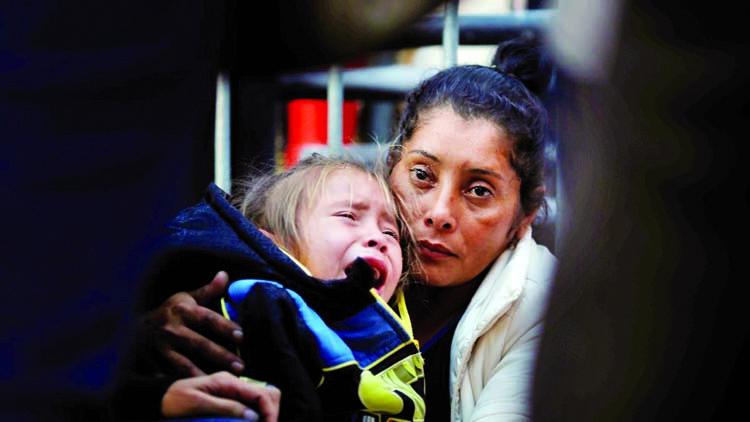
TIJUANA, Mexico (Reuters) :
Members of a group of Honduran migrants, which included a mother who had been photographed running with her daughters from tear gas several weeks ago, began seeking asylum at the U.S. border with Mexico on Monday, according to a Reuters witness and lawyers for the group.
The group comprised mostly teens but also included Maria Meza and her children, the lawyers said. The family appeared in a widely circulated photograph taken by Reuters as they fled tear gas thrown by U.S. authorities during a protest at the border last month when some migrants rushed the U.S. fence.
Sandra Cordero, from advocacy group Families Belong Together, which accompanied the migrants, said eight unaccompanied minors were being processed for asylum. Meza and her family were also being processed, Cordero said. A system dubbed “metering” limits how many can ask for asylum each day at U.S. ports of entry, leading to months-long waits in Mexico for thousands of migrants fleeing violence in Central America.
Sometimes U.S. border authorities allow individuals considered vulnerable, such as unaccompanied minors, be processed more rapidly. Activists said the group on Monday fit that category.
Democratic U.S. Representatives Jimmy Gomez and Nanette Barragan, along with lawyers, accompanied the group at the Otay Mesa port of entry in Tijuana, Mexico, on Monday afternoon, the Reuters witness said.
U.S. Customs and Border Patrol (CBP) agents had said the port of entry was full, Gomez said. Surrounded by advocates and lawyers, the migrants sat by a metal turnstile, having gone beyond a sign marking the division between Mexico and the United States. But by Monday evening, after more than four hours waiting, CBP officials came to let several unaccompanied minors pass through. The asylum seekers had been part of groups of thousands of migrants known as caravans that left from Central America and arrived in Tijuana in recent months.
U.S. President Donald Trump declared the caravans an “invasion,” and sent several thousand troops to “harden” the border, including with barbed wire.
Activists say metering is intended to deter asylum applicants by making the process arduous, while U.S. officials maintain the system only exists to manage overcapacity at ports of entry.

